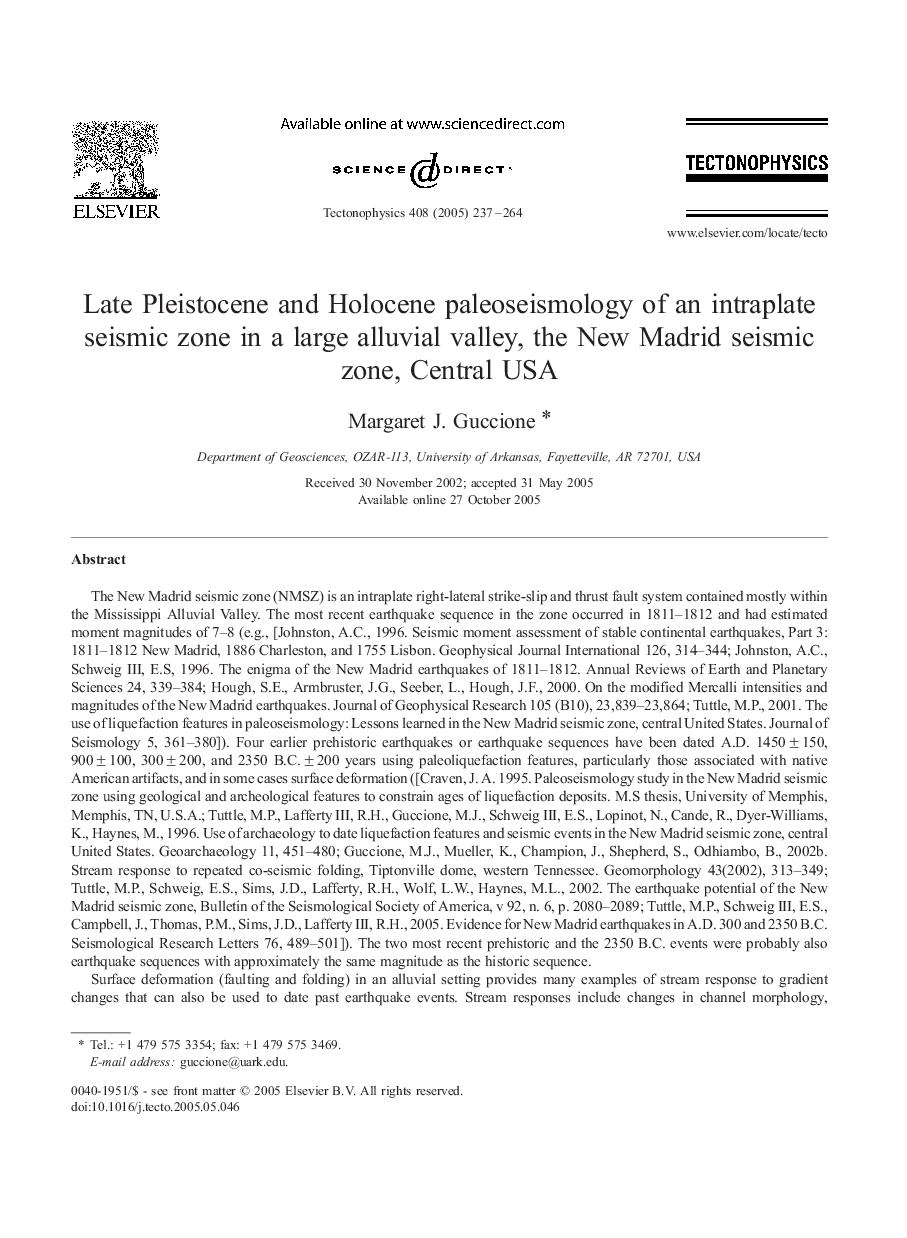| Article ID | Journal | Published Year | Pages | File Type |
|---|---|---|---|---|
| 9527037 | Tectonophysics | 2005 | 28 Pages |
Abstract
Seven fault segments are recognized by microseismicity and geomorphology. Surface faulting has been recognized at three of these segments, Reelfoot fault, New Madrid North fault, and Bootheel fault. The Reelfoot fault is a compressive stepover along the strike-slip fault and has up to 11 m of surface relief ([Carlson, S.D., 2000. Formation and geomorphic history of Reelfoot Lake: insight into the New Madrid seismic zone. M.S. Thesis, University of Arkansas, Fayetteville, Arkansas, U.S.A]) deforming abandoned and active Mississippi River channels ([Guccione, M.J., Mueller, K., Champion, J., Shepherd, S., Odhiambo, B., 2002b. Stream response to repeated co-seismic folding, Tiptonville dome, western Tennessee. Geomorphology 43 (2002), 313-349]). The New Madrid North fault apparently has only strike-slip motion and is recognized by modern microseismicity, geomorphic anomalies, and sand cataclasis ([Baldwin, J.N., Barron A.D., Kelson, K.I., Harris, J.B., Cashman, S., 2002. Preliminary paleoseismic and geophysical investigation of the North Farrenburg lineament: primary tectonic deformation associated with the New Madrid North Fault?. Seismological Research Letters 73, 393-413]). The Bootheel fault, which is not identified by the modern microseismicity, is associated with extensive liquefaction and offset channels ([Guccione, M.J., Marple, R., Autin, W.J., 2005, Evidence for Holocene displacements on the Bootheel fault (lineament) in southeastern Missouri: Seismotectonic implications for the New Madrid region. Geological Society of America Bulletin 117, 319-333]). The fault has dominantly strike-slip motion but also has a vertical component of slip. Other recognized surface deformation includes relatively low-relief folding at Big Lake/Manila high ([Guccione, M.J., VanArdale, R.B., Hehr, L.H., 2000. Origin and age of the Manila high and associated Big Lake “Sunklands”, New Madrid seismic zone, northeastern Arkansas. Geological Society of America Bulletin 112, 579-590]) and Lake St. Francis/Marked Tree high ([Guccione, M.J., VanArsdale, R.B., 1995. Origin and age of the St. Francis Sunklands using drainage patterns and sedimentology. Final report submitted to the U. S. Geological Survey, Award Number 1434-93-G-2354, Washington D.C.]), both along the subsurface Blytheville arch. Deformation at each of the fault segments does not occur during each earthquake event, indicating that earthquake sources have varied throughout the Holocene.
Related Topics
Physical Sciences and Engineering
Earth and Planetary Sciences
Earth-Surface Processes
Authors
Margaret J. Guccione,
